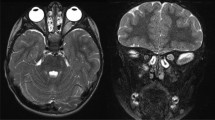Abstract
Anaplastic gliomas (AG) include 6–10% of all newly diagnoses of primary brain tumors. They have an unfavourable prognosis and, to date, there is not an established treatment universally recognized. Four recent randomized clinical trials were identified for a total of 1,170 patients (anaplastic-astrocytomas, anaplasticoligoastrocytoma, anaplastic-oligodendroglioma), in order to define the better sequence and timing of chemo-radiotherapy, Three studies compared radiotherapy (RT) treatment vs. radio-chemotherapy with procarbazine-lomustine-vincristine (PCV) or temozolomide (TMZ) or dibromodulcitol and bichloroethylnitrosurea (DBD/BCNU) and only one compared RT vs chemotherapy (CT) with PCV or TMZ. Results show no significant differences in terms of PFS/OS between RT/CT alone or combined treatment although a trend toward an improvement of OS was observed after RT + CT treatment (m-OS in RT + adjuvant PCV was 42.3 vs. 30.6 months in RT alone p=0.0003). Grade 3–4 mielotoxicity has been observed in almost all cases of patients treated with PCV + RT. None of four studies reviewed conducted a head to head comparison between PCV vs. TMZ. Only a study randomized patients to PCV/TMZ without however providing data in terms of PSF and OS between the two treatments. It found no significant differences in PFS from initial RT and adjuvant CT (PCV–TMZ) at progression compared to initial CT followed by RT at progression. The optimal treatment of AG should reasonably consider not only the histology as well as the molecular markers of the tumor, but also clinical conditions, age of patients, life expectancy, Karnofsky-performance-status and tumor resection to achieve in future the personalization of care.
Similar content being viewed by others
References
Wick W (2011) Anaplastic gliomas: an emerging entity. Eur J Cancer 47(Suppl 3):S357–S358. doi:10.1016/S0959-8049(11)70202-7 (Review)
Tham CK, See SJ, Tan SH (2012) Combined temozolomide and radiation as an initial treatment for anaplastic glioma. Asia Pac J Clin Oncol. doi:10.1111/ajco.12038
Cairncross JG, Ueki K, Zlatescu MC (1998) Specific genetic predictors of chemotherapeutic response and survival in patients with anaplastic oligodendrogliomas. J Natl Cancer Inst 90(19):1473–1479
Polivka J Jr, Polivka J, Rohan V, Topolcan O (2014) New treatment paradigm for patients with anaplastic oligodendroglial tumors. Anticancer Res 34(4):1587–1594
Wick W et al (2009) NOA-04 randomized phase III trial of sequential radiochemotherapy of anaplastic glioma with procarbazine, lomustine, and vincristine or temozolomide. J Clin Oncol 27(35):5874–5880
van den Bent MJ et al (2009) MGMT promoter methylation is prognostic but not predictive for outcome to adjuvant PCV chemotherapy in anaplastic oligodendroglial tumors: a report from EORTC Brain Tumor Group study 26951. J Clin Oncol 27(35):5881–5886
Hartmann C, Meyer J, Balss J et al (2009) Type and frequency of IDH1 and IDH2 mutations are related to astrocytic and oligodendroglial differentiation and age: a study of 1,010 diffuse gliomas. Acta Neuropathol 118:469–474
Capper D, Weissert S, Balss J et al (2010) Characterization of R132H mutation-specific IDH1 antibody binding in brain tumors. Brain Pathol 20:245–254
Figarella-Branger D, Mokhtari K, Dehais C et al (2014) Mitotic index, microvascular proliferation, and necrosis define 3 groups of 1p/19q codeleted anaplastic oligodendrogliomas associated with different genomic alterations. Neuro Oncol [Epub ahead of print]
Hildebrand J, Gorlia T, Kros JM (2008) Adjuvant dibromodulcitol and BCNU chemotherapy in anaplastic astrocytoma: results of a randomised European Organisation for Research and Treatment of Cancer phase III study (EORTC study 26882). Eur J Cancer 44(9):1210–1216
Cairncross G, Wang M, Shaw E (2013) Phase III trial of chemoradiotherapy for anaplastic oligodendroglioma: long-term results of RTOG 9402. J Clin Oncol 31(3):337–343
Van den Bent MJ, Brandes AA, Taphoorn MJ (2013) Adjuvant procarbazine, lomustine, and vincristine chemotherapy in newly diagnosed anaplastic oligodendroglioma: long-term follow-up of EORTC brain tumor group study 26951. J Clin Oncol 31(3):344–350
Fischel JL, Formento P, Etienne MC et al (1990) In vitro chemosensitivity testing of fotemustine (S 10036), a new antitumor nitrosourea. Cancer Chemother Pharmacol 25:337–341
Paleologos NA, Merrell RT (2012) Anaplastic glioma. Curr Treat Options Neurol 14(4):381–390
Triebels VH, Taphoorn MJ, Brandes AA et al (2004) Salvage PCV chemotherapy for temozolomide-resistant oligodendrogliomas. Neurology 63(5):904–906
Addeo R, Caraglia M, De Santi MS (2011) A new schedule of fotemustine in temozolomide-pretreated patients with relapsing glioblastoma. J Neurooncol 102(3):417–424
Scoccianti S, Detti B, Sardaro A et al (2008) Second-line chemotherapy with fotemustine in temozolomide-pretreated patients with relapsing glioblastoma: a single institution experience. Anticancer Drugs 19(6):613–620
Fabi A, Metro G, Russillo M et al (2009) Treatment of recurrent malignant gliomas with fotemustine monotherapy: impact of dose and correlation with MGMT promoter methylation. BMC Cancer 31(9):101
Gaviani P, Simonetti G, Salmaggi A, Lamperti E, Silvani A (2013) Safety of second-line chemotherapy with non-conventional fotemustine schedule in recurrent high grade gliomas: a single institution experience. J Neurooncol 113(3):527–529
Conflict of interest
We declare that we have no conflict of interest.
Author information
Authors and Affiliations
Corresponding author
Rights and permissions
About this article
Cite this article
Simonetti, G., Gaviani, P., Innocenti, A. et al. Update on treatment strategies for anaplastic glioma: a review of literature. Neurol Sci 35, 977–981 (2014). https://doi.org/10.1007/s10072-014-1829-y
Received:
Accepted:
Published:
Issue Date:
DOI: https://doi.org/10.1007/s10072-014-1829-y




